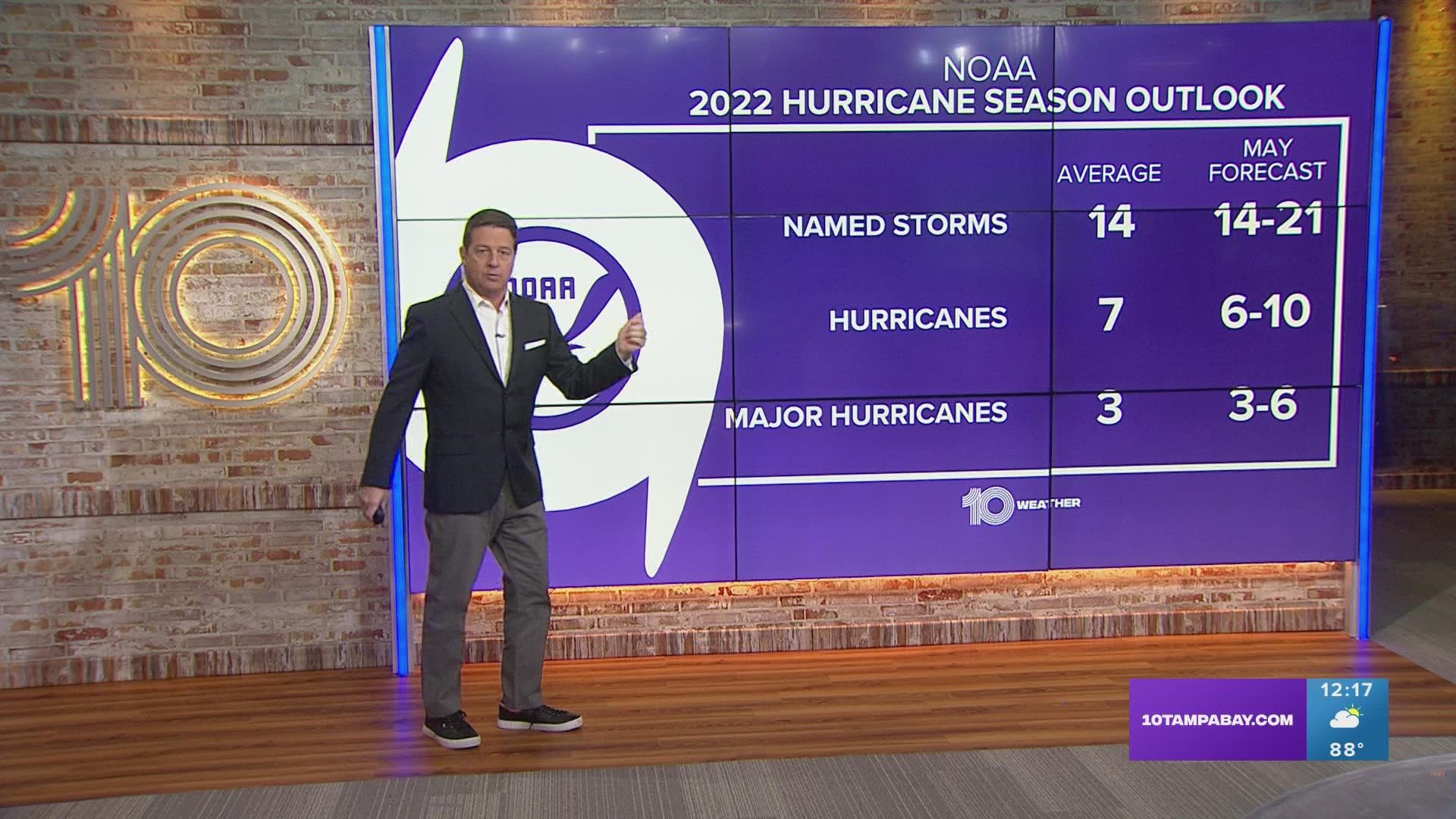ST. PETERSBURG, Fla. — The National Oceanic and Atmospheric Administration is predicting yet another above-average hurricane season — the seventh consecutive year — heading into the 2022 Atlantic hurricane season.
Its announcement comes just days after the National Hurricane Center (NHC) started tracking what was the first area of disturbed tropical weather in the Gulf of Mexico. This disturbance didn't turn out to be anything beyond heavy rainfall and strong storms for portions of the Florida Panhandle, Alabama and Georgia.
NOAA, the government agency that oversees the NHC and other environmental-related entities, forecasts 14-21 named storms with winds of at least 39 mph, or tropical storm strength, this season. This is above the average of 14 named storms.
Of those storms, six to 10 are expected to be of hurricane strength, with winds at or above 74 mph. And three to six of those are forecast to reach major hurricane strength — Category 3 or higher, with winds of at least 111 mph.
There is an average of seven hurricanes and three major hurricanes each year.
Other organizations, including AccuWeather and Colorado State University, already have published their hurricane outlooks published. Both are predicting above-average seasons, as well, and both are highlighting two major factors indicating a more-active period, including warm ocean water and an ongoing La Niña phase.
When a La Niña phase is around for hurricane season, we can expect lighter upper-level winds, which means less wind shear. When there is less wind shear, tropical storms and hurricanes can develop and strengthen.
Colorado State University forecasts 19 named storms, nine hurricanes and four major hurricanes. AccuWeather predicts 16-20 named storms, six to eight hurricanes and three to five major hurricanes.

